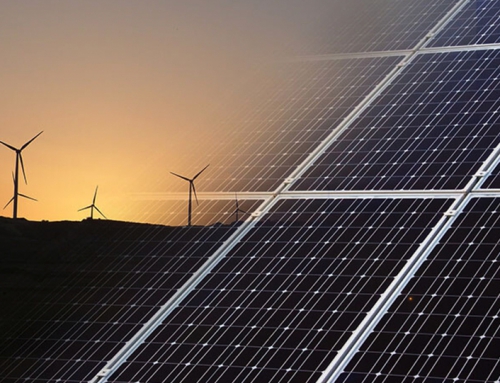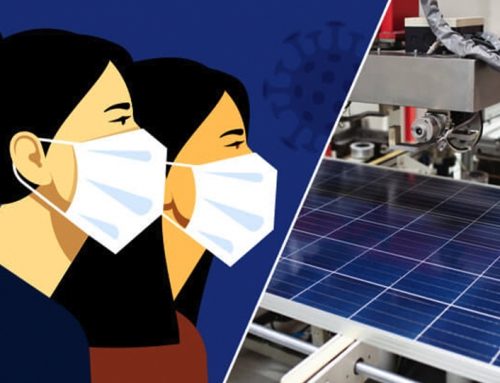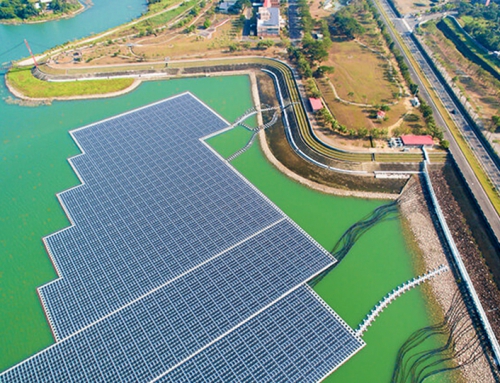The U.S. presidential election this November will be historic for many reasons. Political historians will note it is the first time a sitting president with no public office or military experience before entering the White House will run for re-election. It’s also the first time the post-war world a U.S. election will occur amidst a global pandemic. Also notable is the fact if Democratic Party nominee Joe Biden wins, he’ll be 78 years old at the time of his inauguration, and the oldest president to ever sit in the Oval Office.
But unquestionably, for all these factors that are certain to shape election season and its eventual place in history, there is also the understanding that the outcome of this election in 2020 could be looked back upon as a critical moment in the story of the 21st century when it comes to renewable energy. The next term of the U.S. president will (save for an unexpected turn of events) see them serve 4 years in a world that is becoming more energy-hungry, whilst also becoming more unstable and unpredictable.

Utilizing more renewable energy and pursuing a greater energy independence offers the U.S. the opportunity to create more jobs and business at home, and better protect its people and their interests abroad .
So in looking beyond the day by day of back and forth debate and gamesmanship that is featuring throughout this contest, and instead focusing simply on actions and policies these two leaders have been involved in, which presidential candidate and party can be seen to have the stronger and more sustainable renewable energy platform for the next four years?
The contenders and the context
While an assessment of the platforms of Donald Trump and Joe Biden shall be done here without diving into the partisan politics of their contest, it is important to have some context when it comes to the background of these two candidates, and their record in the renewable energy sector.
As a member of the Obama administration, Joe Biden can claim credit for his party’s role in the fundamental growth of renewable energy during the presidency of Barack Obama. The U.S. had just 1.2 GW of solar capacity and 25 GW of wind power at the start of Obama’s first term in 2009. Around the end of his second, the U.S. had 31 GW of solar and 75 GW wind power. Yes, the fact solar costs have shrunk and many new manufacturers have popped up must be factored into the trend, but it can be widely seen as a solid record.

Concerning his own ventures specifically, since leaving office as Vice-President in 2016, Joe Biden has largely been in the business of preparing for his own presidential run, as well as spending time with his family following the untimely death of his younger son Beau Biden in 2015 due to brain cancer. He recognizes however after 4 years of what many critics have called a “step back” under Trump he has the chance to position his own green policy as forward-thinking.
Donald Trump’s greatest fans, biggest critics, and all in between would agree on one fact: he is a break from the norm when it comes to U.S. presidents. Since taking office in 2016 he has presided over the continued growth of green energy, albeit in a different style to the former Obama administration, and not with the same emphasis many renewable energy advocates would like. Indeed, Trump’s America First Energy Plan first unveiled earlier in his term made no mention of solar at all, making any case on the existing evidence Trump would become a “solar warrior” if re-elected a hard sell.

In particular, while the Trump administration can lay claim to green lighting the biggest ever solar project in the U.S.—the $1bn Gemini development in Nevada—among its achievements, Trump’s imposition of a 30% tariff on foreign solar panels in 2018 has been cited as a notable setback in the growth of solar across the U.S. This reality goes to the core of Trump’s “America First” agenda that has often taken surprising turns.
While the U.S. is certainly not the only nation to have imposed tariffs on foreign solar panels, the ability to diminish reliance on foreign energy sources and obtain greater energy independence for the U.S is by many measures a bread and butter element of conservative policy in the security space. In this regard, Trump’s overall strategy could be seen as a long-term plan to build solar capacity locally via preferential treatment of domestic sources, but the trade-off to it in the short-term means achieving such substantial goals take longer, and means less jobs in the meantime. Something a U.S. president who pre-coronavirus was positioning to run with jobs and economic growth as a centerpiece to his campaign will be hampered by.
Joe Biden’s vision
If all goes as he hopes Joe Biden will defeat Donald Trump and finally become the president after decades of vying for the role. Biden’s record shows he is not the progressive many Democrats would have dreamed of when the primary contest was running, but he is seen as a strong challenger to Trump with his extensive experience in both domestic and foreign policy.
Biden has promised his solar plan will not “just tinker around the edges”. He has promised to spend $2 trillion on renewable energy in the next four years if elected. More boldly, he has promised to see the U.S. use 100% carbon-free electricity by 2035—a substantial shift up from a prior target of 2050, and one that would leave the U.S. with essentially just 10 years from the end of Biden’s first time to achieve his aim.
Specifically, Biden wants to see a newly-created Unity Task Force help drive the installation of a whopping 500 million solar panels within 5 years. This task force would pursue these green goals while also actively seeking to drive stronger action on climate change. There is no question Biden’s targets are audacious. By no means are these goals totally impossible—the rate and scale of renewable energy growth in the U.S. over the past decade has come along in leaps and bounds—but is reliant upon many presumptions that a future history could prove wrong.

In particular, part of the limitation Biden may have in generating momentum for this policy and his presidency overall is the recognition it’s far from clear who shall be leading the nation in 2025. This is not something that is exclusive to him, as if he wins re-election Trump would be serving his second and (his comments notwithstanding about changing the U.S. Constitution to allow him to run again) final term.
But as Biden would be 78 years old by the time he was sworn in if elected, Americans recognize odds are strong it could be vice-presidential candidate Kamala Harris leading the ticket in 2024 even if Biden is able to run for a second term. Nonetheless, given the proven capacity for solar and renewable energy uptake to come along in leaps and bounds, the next 4 years could provide Biden ample time to cement a green legacy.
The coronavirus uncertainty
Although most theorists hold the health aspect of the current coronavirus crisis that the U.S. and so many other nations are experiencing will not persist far into the 2020s—with most estimates placing a vaccine at 12 to 18 months away—undoubtedly there’s the potential for this timeline to extend out. Also, there’s no question the economic damage of the virus will continue for many years more. This means it’s highly likely whichever leader is sitting in the Oval Office in 2021, there will be some additional fluidity surrounding their agenda and capacity to effect it.
Yet it’s also important to recognize beyond the policies of any particular president, there’s the scope for renewable energy growth to occur in the U.S. via the enhancement and better application of government processes.

As Cathy Chis![]() , President and co-founder of PCTI told Solar Magazine in reflecting on the progress of green energy technology as a whole in recent years, “It has been exciting to see better distribution of government aid and grants. We’ve seen more funds available at the state and federal level for manufacturing to support their productivity improvement projects and R&D programs to advance technology, both of which can accelerate growth in the renewable energy sector.”
, President and co-founder of PCTI told Solar Magazine in reflecting on the progress of green energy technology as a whole in recent years, “It has been exciting to see better distribution of government aid and grants. We’ve seen more funds available at the state and federal level for manufacturing to support their productivity improvement projects and R&D programs to advance technology, both of which can accelerate growth in the renewable energy sector.”
“This means more opportunity for companies like PCTI as we look to advance renewable energy technology, grow our business, create more jobs, and advance U.S. leadership in the sector”, said Ms. Chis.
At the same time, Ms. Chis does contend there does remain progress to be made in certain areas when it comes to representation in the public debate.




